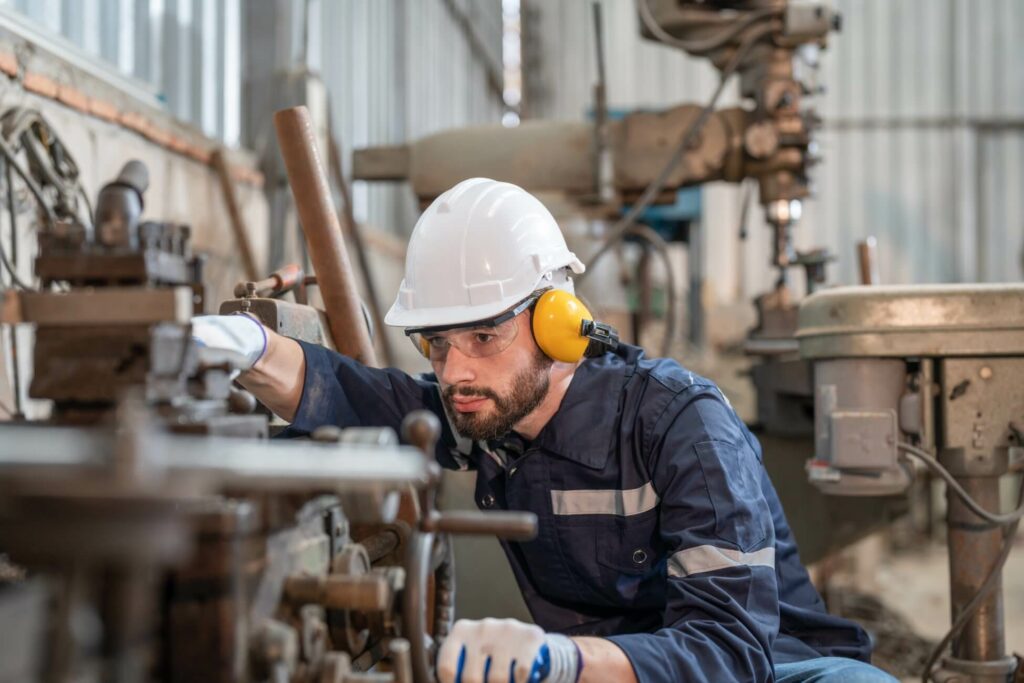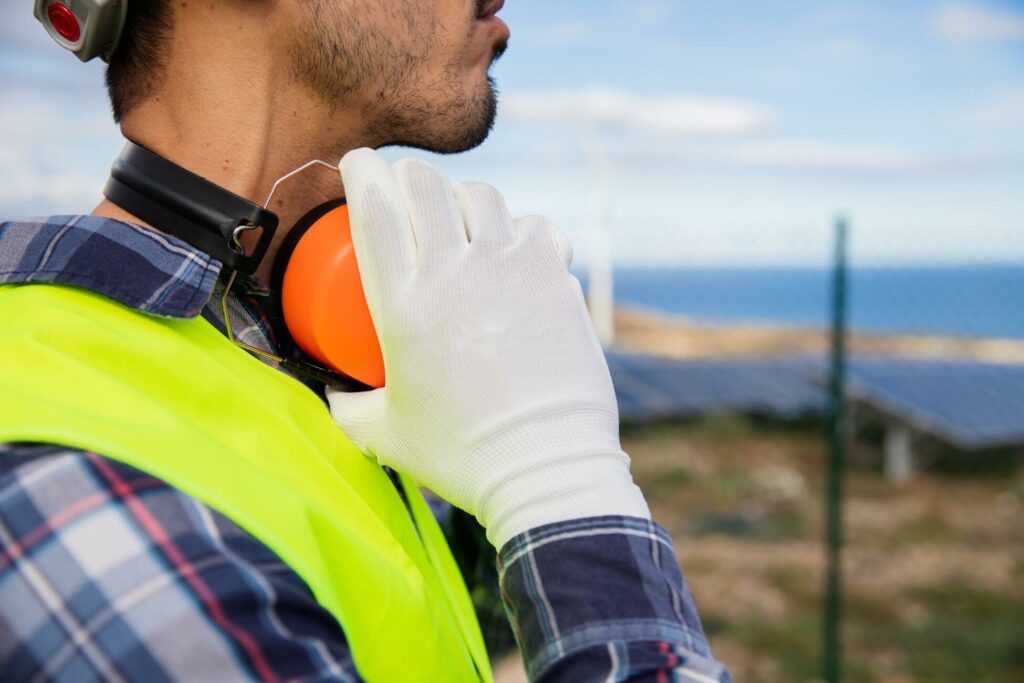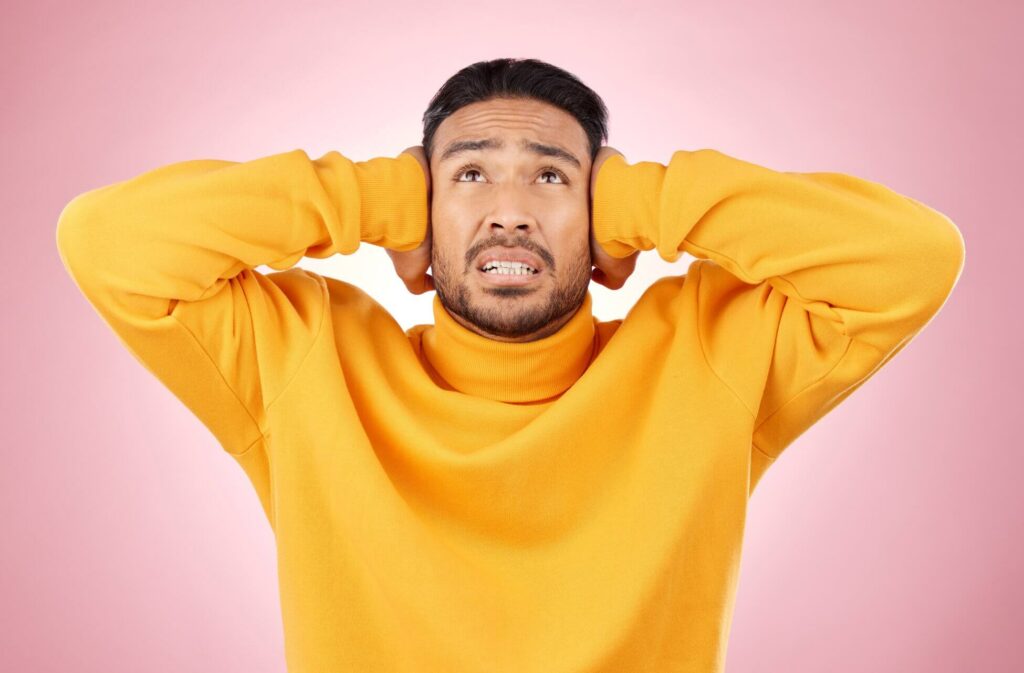Hearing damage
What is it and how do you prevent it?
Hearing damage is a common problem in the workplace, often caused by exposure to high noise levels.
At Wijngaarden VeiligGoed, we focus on providing information and solutions to prevent hearing damage and noise-induced hearing loss.
What is hearing damage?
Hearing damage refers to any form of damage or condition which it hearing ability affects. One of the most common forms is noise deafness, which is the result of exposure to excessive noise.
How does hearing damage occur?
- Exposure to loud noises: Exposure to sounds above 80 decibels (dB) can already be harmful.
- Duration of exposure: The longer the exposure to loud sounds, the greater the risk of hearing damage.
- Frequency of exposure: Repeated exposure to noise increases the risk of permanent damage.
How much dB is harmful to hearing?
- 80 dB: The noise level at which the risk of hearing damage begins.
- 85 dB and above: Prolonged exposure can cause permanent hearing damage.
- 100 dB and above: Brief exposure can already lead to irreparable damage.
Symptoms of hearing damage:
- Tinnitus
- Difficulty understanding conversations in noisy environments
- Reduction in hearing
- Pain in the ears

Prevent hearing damage
At Wijngaarden VeiligGoed, we are focused on preventing hearing damage from noise. We offer a range of quality hearing protection products, such as earmuffs and earplugs, which provide protection from harmful noise levels.
Our hearing protection products:
- Earmuffs: Adjustable and comfortable ear muffs offering high attenuation.
- Earplugs: Reusable and disposable earplugs for optimal noise protection.
- Otoplastics: Custom-made hearing protection for a perfect fit and maximum attenuation. For more information the website from our sister company Ronell.
Importance of prevention
Preventing hearing damage is crucial as it often has permanent consequences. Noise and dB hearing damage can significantly affect quality of life, the welfare and the work performance. It is therefore very important to be aware of the risks and take preventive measures.
Wijngaarden VeiligGoed offers educational e-papers. But also posters that can be used at your workplace.
Are you going to use our products? Then we are happy to offer a toolbox to, where a consultant will go through important handouts with your staff at your premises.
Steps to prevent hearing damage:
- Creating awareness: Know which noise levels are harmful and recognise the symptoms of hearing damage.
- Choosing correct hearing protection: Use earplugs, earmuffs, or otoplastics that suit your situation.
- Regular hearing tests: Have your hearing tested regularly to identify early signs of hearing damage.
- Avoid exposure to noise: Avoid noisy environments as much as possible or limit the duration of exposure.
Noise levels and their impact on hearing damage
It is important to understand that noise levels, measured in decibels (dB), have a major impact on the risk of hearing damage. Environments with noise levels above 80 dB can already pose risks.
- 90-95 dB: Tools such as drills and lawnmowers.
- 100-110 dB: Concerts, motorbikes, and headphones at high volume.
- 120 dB and above: Aircraft engines, fireworks and gunfire.
Impact of frequent noise exposure
Frequent exposure to high noise levels significantly increases the risk of permanent hearing damage.
Workers in the construction and industry are particularly at risk due to constant exposure to high decibels. It is essential to wear adequate hearing protection.
Treatment and rehabilitation of hearing damage
Although many forms of hearing damage are permanent, treatment options and rehabilitation methods are available to minimise the damage of affected individuals.
- Hearing aids: These can help amplify sounds and are essential for people with significant hearing loss.
- Therapy and rehabilitation: Hearing training and therapies can help manage hearing loss and improve communication skills.
- Medical interventions: In some cases, medication or surgery may be useful, depending on the cause of the hearing damage.

Legal standards and regulations
In the Netherlands, strict legal standards and regulations have been implemented to protect workers from the risks of exposure to harmful noise levels.
These regulations are essential to ensure the safety and health of workers in various sectors, especially in industries where high noise levels are the order of the day.
Occupational health and safety legislation
The Occupational health and safety legislation states that employers are responsible for providing a safe working environment and minimising health risks, such as hearing damage. This emphasises that employers are obliged to:
- Conduct risk inventory and evaluation (RI&E): To identify and evaluate potential hazards and risks in the workplace, including noise exposure.
- Provide information and training: Workers should be well informed about the risks of noise exposure and the protective measures available.
- Provide hearing protection equipment: When exposed to noise above 80 dB, effective hearing protection devices should be made available to workers.
Noise limits and exposure time
Legal standards specify different noise limits and maximum exposure durations to prevent hearing damage. For noise levels above the 80 dB its preventive measures required.
If the noise level exceeds the 85 dB exceeds, the use of hearing protection is mandatory. Moreover, the maximum exposure duration and frequency of exposure are strictly regulated to avoid prolonged and repeated exposure.
Monitoring and enforcement
Inspectorate SZW monitors compliance with these legal standards and can impose sanctions on organisations that fail to comply with regulations.
This can range from warningn and fines to the stopping of work if serious violations are found.

Vineyards SafeGood and compliance
At Wijngaarden VeiligGoed, we support companies in meeting legal standards and regulations on hearing protection. We offer expert advice, high-quality hearing protection equipment and educational materials to help companies and their employees become aware of the risks and adequately protect themselves against hearing damage.
Our consultants are up-to-date with the latest laws and regulations and are there to guide organisations towards full compliance and a safer workplace.
Get expert advice from our experts
Take contact with us for more information on our products and services and find out how we can help you prevent hearing damage and noise-related deafness.

Our advisors are happy to help you or make an appointment if you wish.
Phone: +31 184 434 455
Mail: info@veiliggoed.nl
